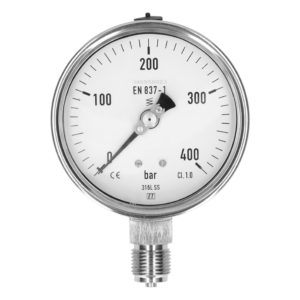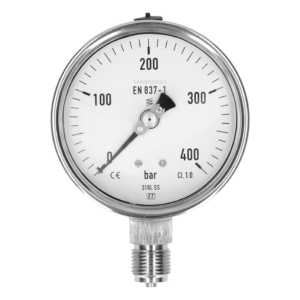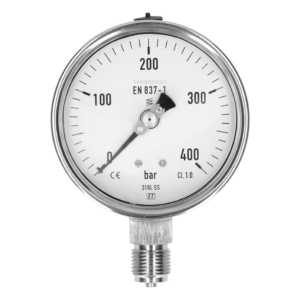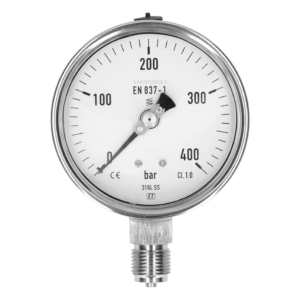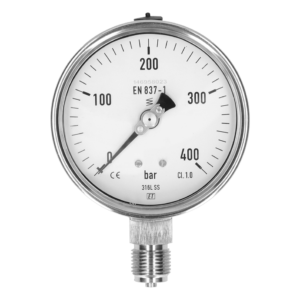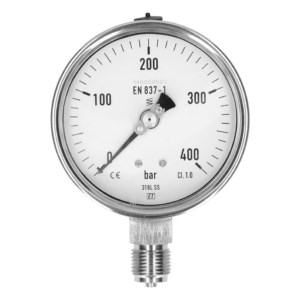Your cart is currently empty!
Pressure gauges dry application
For 40 years now, EMVO Techniek has been a specialist in pressure gauges. Are you looking for a pressure gauge for dry applications? In our range, you will find dry pressure gauges for all types of applications. Does it need to have a specific reach? Whether your pressure gauge is meant for differential pressure, underpressure or overpressure: we can always provide you with the right pressure meter.
How does a dry pressure gauge work?
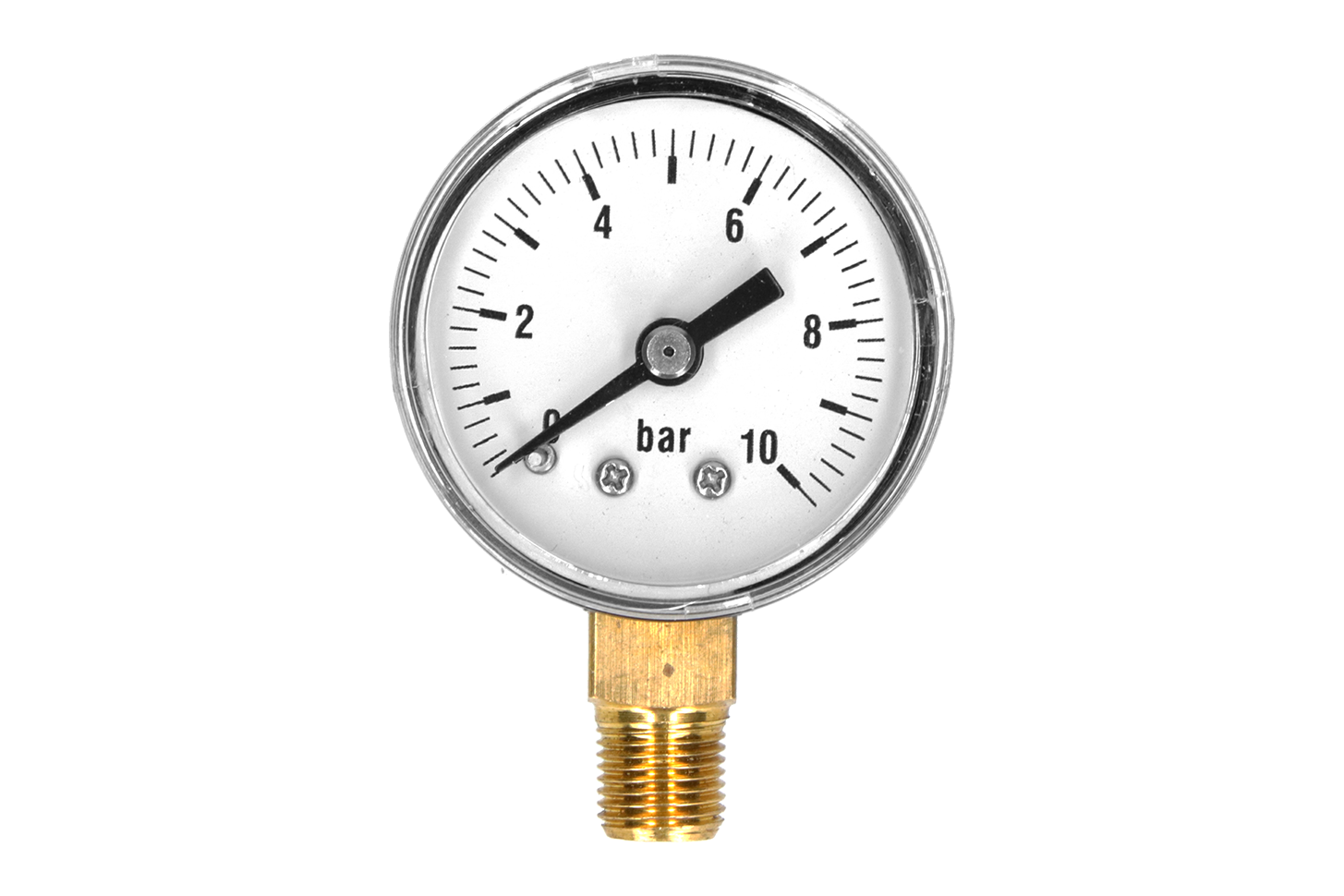 A dry pressure gauge, or mechanical pressure gauge, is also called an “aneroid” gauge: “without fluid”. The term refers to the functioning of the pressure gauge itself, and not to the measured medium. An aneroid pressure gauge can measure pressure both in gas and liquid substances, but in the instrument itself, no fluid (usually glycerin) is used.
A dry pressure gauge, or mechanical pressure gauge, is also called an “aneroid” gauge: “without fluid”. The term refers to the functioning of the pressure gauge itself, and not to the measured medium. An aneroid pressure gauge can measure pressure both in gas and liquid substances, but in the instrument itself, no fluid (usually glycerin) is used.
A pressure-sensitive, elastic metal element is used in this type of gauges. The metal within the gauge will deform due to pressure difference. This deformation is sensed and will be measured, which will cause the gauge needle to turn and indicate the pressure on its scale. We offer a wide range of pressure gauges for dry application to offer. You can choose from pressure gauges:
- With steel casing;
- With stainless steel casing;
- With plastic casing;
- Fully made of stainless steel.
A dry pressure gauge is suitable for environments that do not cause condensation on the display glass, and where no vibrations or pressure surges occur. They are cheaper than the glycerin filled pressure gauges that are applied in more unstable and moist environments.
Dry pressure gauge vs. glycerin pressure gauge
Is the pressure gauge meant for application in environments where big pressure surges, constant mechanic vibrations or sudden blasts may occur? In that case, a glycerin filled pressure gauge is a better choice. Glycerin not only prevents condensation, but also keeps the display needle in balance, so that in case of vibrations and such, pressure is still indicated accurately. Furthermore, the fluid protects the instrument from wearing out.
Dry pressure gauge: Bourdon or diaphragm?
The most commonly used pressure gauge or manometer is the Bourdon pressure gauge. However, when the measured medium is corrosive, polluted, or viscous, the better option is a diaphragm pressure gauge. The diaphragm separates the medium from the pressure gauge mechanism, preventing it from damage caused by certain properties of the medium. Would you like to find out how a pressure gauge works? Click here for more information.
Dry pressure gauge: accuracy
Accuracy is an important feature for your pressure gauge. The manometer class number tells you what accuracy it has: A dry pressure gauge class 1.0 has a maximum deviation of 1% on the reach of the scale. For example: when the maximum reach is 5 bars, deviation would be maximum 0.05 bar.
Buy your pressure gauge
Would you like to purchase a dry pressure gauge? Please, contact us. Ask for a quotation without any further obligation; we are glad to help! If you have any questions or need professional advice, you can always send us a message, or contact us by phone.
Showing 417–432 of 486 results
